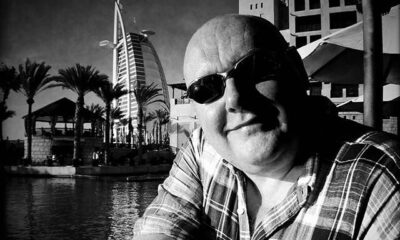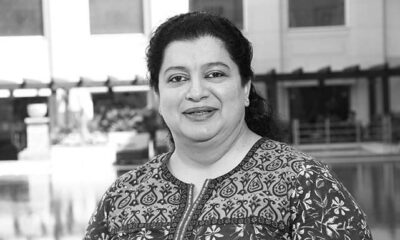

Environment
Exclusive interview: Pete Geddes, Managing Director of American Prairie Reserve
Prior to joining American Prairie Reserve in 2011, he served as Director of Development and Operations at Property and Environment Research Center, and as Executive VP at the Foundation for Research on Economics and the Environment. Originally from New York State, he is active in his community serving as a director of the Bozeman Amateur Hockey Association, the Gallatin Valley Ice Foundation, and as a trustee of the Sourdough Volunteer Fire Department. He speaks to Blue & Green.
In 140 characters or less, what is the American Prairie Reserve and Wild Sky
APR is the most ambitious conservation project in North America. Wild Sky encourages wildlife friendly ranching via sales of high quality beef.
What projects does the wildlife reserve undertake?
The American Prairie Reserve (APR) is spearheading a historic effort to reignite America’s passion for large-scale conservation by assembling the largest wildlife reserve of any kind in the lower 48 states. The goal is to create a truly massive reserve, consisting of more than three million acres of both private and public lands, and teeming with Buffalo, bears, eagles, Pronghorn antelope and more. When complete, The American Prairie will be the first large-scale reserve created in the lower 48 states in the last 100 years, accessible to all, and larger than Yellowstone National Park.
To achieve this goal we are working across three main areas; raising funds to acquire wildlife habitat, restoring and modifying land to support the entire suite of biodiversity native to Montana’s northern Great Plains, and engaging in efforts that provide economic benefit to our neighbors and help people enjoy and learn about the prairie ecosystem. One of our latest projects is Wild Sky – which is all natural, 100% grass-fed beef from which we return a portion of the profits to participating ranchers raising cattle to a set of specific conservation oriented practices. By creating incentives for ranchers to view wildlife as an asset we plan to blur the boundaries of the Reserve with surrounding agricultural lands.
What’s the biggest challenge the prairie faces?
Conversion of native prairie to agricultural cropping is a big challenge for us. Once tilled, the prairie takes more than a century to return to even a semblance of its native state.
How did you become involved?
I have been intrigued with the conservation of large landscapes since college. APR offers the opportunity to be on the team that is creating America’s first 21st century park half again as large as Yellowstone, all with private philanthropy.
What’s you most memorable experience of working on the reserve project?
Any morning, of which there have been many, when I am walking on the prairie at first light. The enormity of this landscape and the interplay of light, sound and smell is remarkable.
How are you funded?
We are funded entirely through the voluntary contributions of individuals and foundations from around the world.
How close are you to your goal of buying half a million acres of prairie?
About ten percent of the way. The limiting factor is meeting people who share a passion for what we do and have the means to help.
If we could make you US President for the day and Congress had given you a free pass to enact one piece of law, what would it be?
Make the week of the Stanley Cup Playoffs (NHL hockey) a national holiday!



 Environment10 months ago
Environment10 months agoAre Polymer Banknotes: an Eco-Friendly Trend or a Groundswell?

 Environment12 months ago
Environment12 months agoEco-Friendly Home Improvements: Top 7 Upgrades for 2025

 Features9 months ago
Features9 months agoEco-Friendly Cryptocurrencies: Sustainable Investment Choices

 Features10 months ago
Features10 months agoEco-Friendly Crypto Traders Must Find the Right Exchange





























